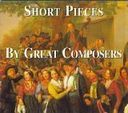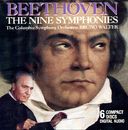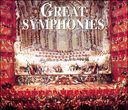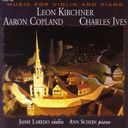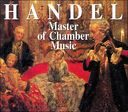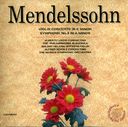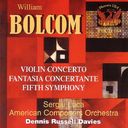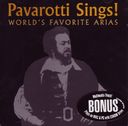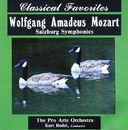Westminster Abbey Choir Bairstow Harris & Stanford:Choral Wor
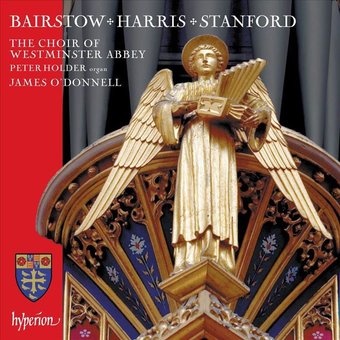
| Price: | $18 |
| List Price: |
|
| You Save: | $1.98 (10% Off) |
|
Brand New
|
CD Details
- Released: May 3, 2019
- Originally Released: 2019
- Label: Hyperion
Tracks:
- 1.Ruihan Bao-Smith, Westminster Abbey Choir, James O'Donnell & Peter HolderBlessed City, Heavenly Salem
- 2.Mark Dobell, Robert Macdonald, Westminster Abbey Choir & James O'DonnellLet All Mortal Flesh Keep Silence
- 3.Westminster Abbey Choir, James O'Donnell & Peter HolderThe Lamentation
- 4.Westminster Abbey Choir & James O'DonnellBring us, O Lord God
- 5.Julian Stocker, Westminster Abbey Choir, James O'Donnell & Peter HolderStrengthen Ye the Weak Hands
- 6.Westminster Abbey Choir & James O'DonnellFaire Is the Heaven
- 7.Peter HolderFlourish for an Occasion
- 8.Westminster Abbey Choir & James O'DonnellA Song of Wisdom, Op. 113 No. 6a
- 9.Westminster Abbey Choir, James O'Donnell & Peter HolderO for a Closer Walk with God, Op. 113 No. 6b
- 10.James Thomson, Simon Wall, Westminster Abbey Choir, James O'Donnell & Peter HolderFor Lo, I Raise Up, Op. 145
- 11.Westminster Abbey Choir, James O'Donnell & Peter HolderEvening Service in A, Op. 12: I. Magnificat
- 12.Westminster Abbey Choir, James O'Donnell & Peter HolderEvening Service in A, Op. 12: II. Nunc dimittis
- 13.Thomas Byrne, Westminster Abbey Choir, James O'Donnell & Peter HolderFestal Communion Service in B-Flat, Op. 128: I. Gloria in excelsis
Product Description:
Edward Cuthbert Bairstow (1874-1946) did his apprentice years as organist of Wigan Parish Church between 1899 and 1906. He then moved to the more prestigious post of Leeds Parish Church where he composed his introit Let all mortal flesh keep silence for unaccompanied choir in the first year of his appointment there (though the anthem was not published until 1925). Using the translation by J M Neale from the Divine Liturgy of St James (later popularized by Gerard Moultries translation in The English Hymnal), Bairstows masterly through-composed structure superbly captures a sense of mystery in its opening and closing statements in vivid contrast to the exultation of the cherubim and seraphim in its climactic bars. Composed in 1914, not long after Bairstow was appointed at York Minster, Blessed city, heavenly Salem, his most famous creation, was written for the churches at Heaton, Bradford. Based on the seventh-century plainsong hymn Urbs beata Hierusalemwhich accounts for its peculiarly modal properties (and its special affinity with Elgars similar harmonic practices)the anthem is a dramatic series of choral variations on the plainsong material. There is also a major role for the organ, especially where it conveys the anthem from its apogee to the tranquil final variation. In this ultimate statement, a chorale version of the plainsong in a modal B flat minor supports a poignant and gentle fluid upper melody for trebles (To this temple, where we call thee) full of longing and understated melancholy. Bairstow later orchestrated his anthem for string orchestra and organ (probably at the request of Charles Macpherson, organist of St Pauls Cathedral) in which form it was sung at the Empire Thanksgiving Service at St Pauls Cathedral on 18 June 1924.
In an idiom which owes its origins to Anglican chant, The Lamentation was written in 1942. The text, from Jeremiah, was chosen by Eric Milner-White, the Dean of York and a liturgical innovator, and was used at York Minster for Lenten Fridays, Passion Sunday and Matins during Holy Week. Another carefully conceived variation structure, the Lamentations are constructed in three sections: the first (verses 1-7) is titled The prophet mourneth for the sins of the people of God; the second (vv. 8-16) Christ recalleth us to God by his Passion; and the third (vv. 17-26) The Church repenteth and turneth again. The first two sections begin with the same chant, but, anchored to C minor, continue with different variations on the initial statement. The more resolute third statement, in A flat, is based on a new variation. All three sections conclude with a refrain in C major (Jerusalem, Jerusalem, return unto the Lord thy God).
After cutting his teeth as Assistant Organist of Lichfield Cathedral, William Harris (1883-1973) was appointed as organist of New College, Oxford, in 1919 and Christ Church, Oxford, in 1929. In 1933 he moved to St Georges Chapel, Windsor: a position he held until his retirement in 1961. Harris is best known today for his two double-choir motets, Faire is the heaven (1925), written for New College choir, and Bring us, O Lord God (1959), composed towards the end of his career at St Georges. Using selected lines from Edmund Spensers A Hymne of Heavenly Beauty, Faire is the heaven is a subtle ternary structure. Dextrous in his use of diatonic dissonance in the outer sections (something he undoubtedly gleaned from Parry), Harris reserved the central part for more adventurous tonal development deploying a process of third-related keys before recapitulating the opening material in modified form. Cast in the same key (D flat major), Bring us, O Lord God, a setting of John Donnes A Sermon Preached at White-hall, February 29, 1628, makes use of the same rich diatonicism and third-related procedures, though its shorter and less image-driven design is through-composed. Of particular note is the magical coda in which Harris seems to take us conclusively to B flat major, only for the very last chord to restore the celestial ambience of D flat.
Published in 1948, the Flourish for an Occasion dates from 1947, the year of the marriage of Princess Elizabeth and Philip Mountbatten, Duke of Edinburgh. As its title suggests, its grand quasi-orchestral gestures make full use of the romantic organ, and Harris, a master of modulation and a true inheritor of the diatonic style and language of Parry, contrasts the heraldic material of the outer paragraphs with quieter poetic introspection in the central section.
With words taken from Ecclesiasticus, Isaiah and the Book of Common Prayer, Strengthen ye the weak hands was composed for the opening service of the Canterbury Festival in Canterbury Cathedral on 25 June 1949 to commemorate the Science and Art of Healing. More symphonically conceived (like Stanfords For lo, I raise up), the anthem is framed by a theme exclusive to the organ. An introductory recitative for solo tenor leads to the main body of the anthema ternary design for the full choir, beginning with the text that gave rise to its title. The longer secondary paragraph (Then shall the eyes of the blind) of this tripartite structure leads to a fuller, affirmative restatement of the first idea before the anthem concludes with a wistful recurrence of the organ theme and a more austere, declamatory coda (O Saviour of the world) for the full choir.
Organist and Director of Music at Trinity College, Cambridge, between 1873 and 1892, Charles Villiers Stanford (1852-1924) composed his Evening Service in A, Op 12, in response to a commission from John Stainer for the Festival of the Sons of the Clergy at St Pauls Cathedral in 1880. The piece was therefore conceived very much with the accompaniment of the orchestra in mind and its role in the service very much influenced its symphonic design. It also explains the somewhat demanding nature of the Magnificat (especially the opening) in Stanfords transcription for the organ. The organic nature of the Magnificat, which thoroughly develops the initial four-note cell (C#DEA) heard at the opening, owes much to the spirit and exuberance of Brahmss early orchestral serenades, though there is also much in the more stormy central section (He hath shewed strength with his arm) which Stanford had learned from the pages of Ein deutsches Requiem, Op 45 (18658), and Das Schicksalslied, Op 54 (1871). This may also be said of the Nunc dimittis which is a through-composed instrumental essay par excellence. Deeply affecting in its valedictory sensibility, the movement lays stress on the opening line of Simeons exclamation (Lord, now lettest thou thy servant depart in peace) not only as part of the choirs initial statement but as its last. The climax (To be a light to lighten the Gentiles) also betrays Stanfords love of opera and more specifically his admiration of Wagners Ring cycle, which he had heard at Bayreuth in 1876.
With words from the wisdom literature of Ecclesiasticus chapter 24, A Song of Wisdom, the last of the Six Bible Songs, Op 113, dates from 1909 and was written for the soprano Agnes Nicholls, renowned at that time for her major roles in opera and oratorio. Stanfords Bible Songs occupy a unique place in English church music in that they clearly have connections with the secular Lieder tradition, yet, with organ accompaniment (which is itself more expansive and symphonic in design and structure) the songs seem to take on the apparel of a short solo cantata, particularly when they are sung with the additional hymn anthem at the conclusion. As an apposite counterpart to A Song of Wisdom, Stanford composed t





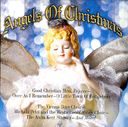



![The Royal Wedding: The Official Album [2011] (Live) The Royal Wedding: The Official Album [2011]](https://d1wj8oqehjepyy.cloudfront.net/i/boxart/w128/70/66/602527706627.jpg?v=5)

